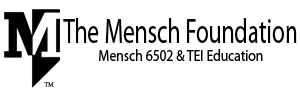The following is a road map for learners to get started with and deeper learning and understanding of computer science and application of computers including engagement with WDC’s 65C02 and 65816 microprocessor technology. With this information and links a cohort of computer science learners will have plenty of reference information to enrich their computer science learning.
Getting started learning about the Mensch Microcomputer series of Single Board Computer (SBC) microcomputers will enrich through learning how to control simple electrical and electronic components through programming in Machine, Assembly, and C languages.
The limitations of the low cost MENSCH™ forces one to think about how to simplify the code to perform simple operations associated with electronic systems.
Once some basics of computer systems are understood one can graduate to the latest state-of-the-art programmable logic computer systems using Field Programmable Gate Arrays (FPGAs) in the form of Intel/Altera Max10 FPGAs using WDC’s 65C02 and 65816 Verilog RTL HDL softcore IP.
- The 6502, 65C02 and 65816 microprocessors have a history of innovation expressed in various articles one can find online by Googling 6502, 65C02 and 65816. Here is a recent article Hackaday that might be new to CSE learners today.
- Hackaday also did a fairly good summary of how the MENSCH™ Microcomputer fits into the world of 6502 things.
- When one is ready to learn more about the 6502 one could work with the Visual6502 to see what goes on within the NMOS version, original design.
- The interesting and creative MOnSter 6502 can be found in this link.
- The Easy6502 simulator is another way of learning how to code in Assembly Language with an online browser.
- There is a ton of information on org and WilsonMinesCo websites.
- The Mensch Monitor Manual and Mensch Monitor Listing are good resources for Assembly Language routines and Assembly Language code examples and understanding what is in the Mensch 8Kbyte ROM.
- The Western Design Center’s Information Website is the original website that we use to support the WDC Business Development Website.
- The Mensch Foundation website is used to support Computer Science , Electrical and Computer Engineering, Embedded Systems and understanding of Embedded Intelligence of things both man made and naturally occurring.
- Programming the 65816 Including the 6502, 65C02 and 65802 is the best programming manual for learning how to program the Mensch Microcomputer.
- To start actually coding and working with the WDCTools one should download WDCTools and begin working with the 65816simulator which has a sample program.
- Go to Getting Started with the MENSCH™ Microcomputer.
MyMENSCH™ SBCs are available through Amazon, Mouser, Newegg and Tindie.
MyMENSCH™ FPGA Microcontrollers are a departure from the manually optimized GDSII Chip (IC) designs for WDC’s microprocessor, microcontroller and peripheral IC design methodology. All hardware is described with software using the Verilog Hardware Description Language (HDL) sometimes called Silicon Intellectual Property (SIP). WDC uses the Intel/Altera Quartus Development System for designing and debugging the SIP for use with MyMENSCH™. WDCTools are used for both Assembly and C languages and debugged with the built in USB developer port using WDCTools debugger.
Advanced student learners will learn Verilog HDL and build their own 8-bit and 8/16-bit computers using state-of-the-art design techniques taught in colleges of engineering throughout the world.
MyMENSCH™ is thought of as a stepping stone into the future of hardware described with software, HDL. The entire embedded intelligence of a man made thing will be coded with HDL and all programming languages will result in machine code running the intended application on the hardware.
The most optimized machine code will be built with optimized libraries using Assembly language. Other languages like C will be compiled while Java, JavaScript, Python and others will run through interpreters built with the machine’s language.
When one wants to write in the Java language for WDC65xx microcomputers one can use Java Grinder to convert Java to run in the 65C02 and 65816 machine languages.
MENSCH™ SBCs will enrich learning CSE sensing, processing, communicating and actuating (SPCA) concepts through adding electronic components such as LEDs, LCDs and OLEDs for display purposes, tones for audible signaling, music and alarms, motors for vibration signaling and movement as well as communications through Bluetooth, Wi-Fi, LoRa and cellular radios will complete the basics of computer science and engineering learning.

